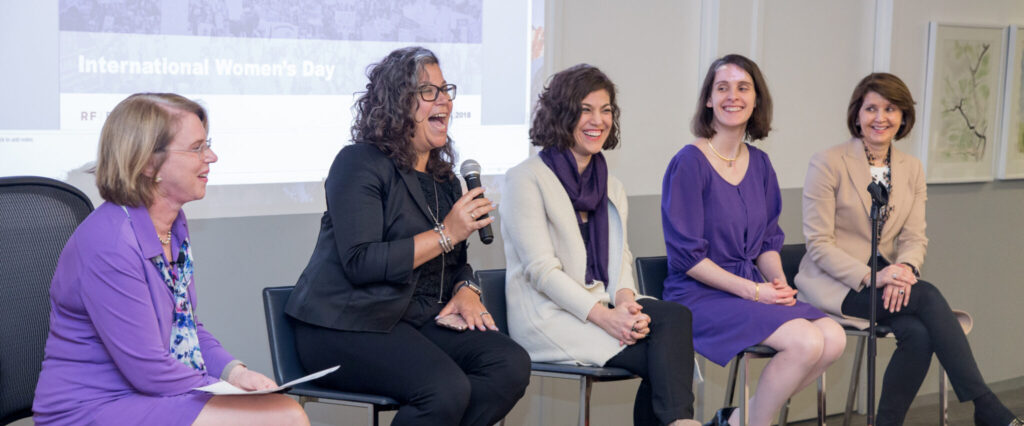The future is female. It’s a phrase we hear often these days, as more women take positions of power, and more movements are launched to break barriers and ignite progress for females around the globe. As a female business leader, I find it important to use International Women’s Day as a time to reflect on where we’ve been and where we’re going, and to evaluate how we can best continue to press for progress.
2017 was a strong statement year for women. 5 million people stood up across the globe for the Women’s March, the #MeToo movement sparked an entirely new narrative on sexual harassment, Marvel’s Wonder Woman gave girls and women everywhere a new kind of role model, and Time Magazine named the “silence breakers” as Person of the Year. In 2018 the momentum has continued with the #TimesUp campaign. Even on the first days of Women’s History Month, we’ve seen more brands than ever launch marketing campaigns promoting female empowerment. In short, some of the greatest issues women face have made it to mainstream conversation for the first time ever, and has become a central topic in media, entertainment, and marketing.
But this is not the first time women have risen up and demanded to be treated as equals and to be recognized for the important role they can have in building the future. This fight has been going on for almost 100 years. The Equal Rights Amendment, which states that rights guaranteed by the Constitution need to apply equally to all persons regardless of their sex, was first proposed in 1923 by suffragist Alice Paul who introduced the ERA as the next step in bringing “equal justice under law” to all citizens.
When I was growing up, the seventies was another time of important change — one we all believed would be the tipping point for women. It was an important moment when things started to change. Women entering college felt that any occupation was open to them not just the traditional jobs of nursing and teaching and you didn’t go to college just to get married. It is hard to imagine that was the sentiment not that long ago.
And once again in 1972, when the ERA was finally passed by Congress and sent to the state for ratification it never happened. Here we are in 2018 and the ERA still has not passed.
Today, particularly over the past two years, awareness and advocacy are advancing quickly and women are increasingly taking empowerment into their own hands in many different and important ways. Consumption data from Google shows that women are seeking content that helps empower them to build and lead companies. According to their 2017 data, female watch time for content related to small business, business news, and business services more than tripled year over year on YouTube, and the time women spent watching entrepreneurial videos on YouTube more than doubled year over year.
With all this momentum, it’s more important than ever for business leaders—both women and men—to build on the voices and movements that have come forward, and find tangible opportunities to empower women. Leaders have the power to pave pathways inside their organizations—such as offering employees educational opportunities, leadership roles, and special growth tracks. A study conducted by our client, Tupperware, illustrated that confidence can be increased by 30% if organizations create supportive and empowering workplace cultures.
But leaders have an even greater opportunity—we don’t need to just find ways to beat the system; we must work to change the system itself. We can change it by investing in women. And I mean that literally. Women and men have the opportunity to use their investment dollars to make a difference.
In 2017, we worked with our client, Pax World Funds, to launch a new video, “Invest Like a Feminist” that shared a key message – investing in women isn’t just the right thing to do, it’s the smart thing to do. A number of critical research studies prove that investing in women is truly beneficial for bottom line results, and that there is strong correlation between women in leadership and business performance. There’s no question that investing in women-led organizations will be key in driving demand for women in business, female leadership teams and more women on boards.
By doubling down on women-led organizations, we’ll be able to cultivate stronger discourse among founders and business leaders around the globe, and push two critical messages forward: more women leaders = a better bottom line and in turn more women leaders = more outside investment.
By quantifying the power of women in leadership, we are able to go beyond just conversation, ignite action, and spark new motivation to bring women to the top. This year, we added Pax Ellevate Global Women Leadership Fund to our 401k options, giving all women and men that work at RF|Binder the opportunity to join the movement.
This year, our team will continue to #PressforProgress and raise the voices of advocates for women, while also advocating for ourselves.
Here’s to another strong year.



